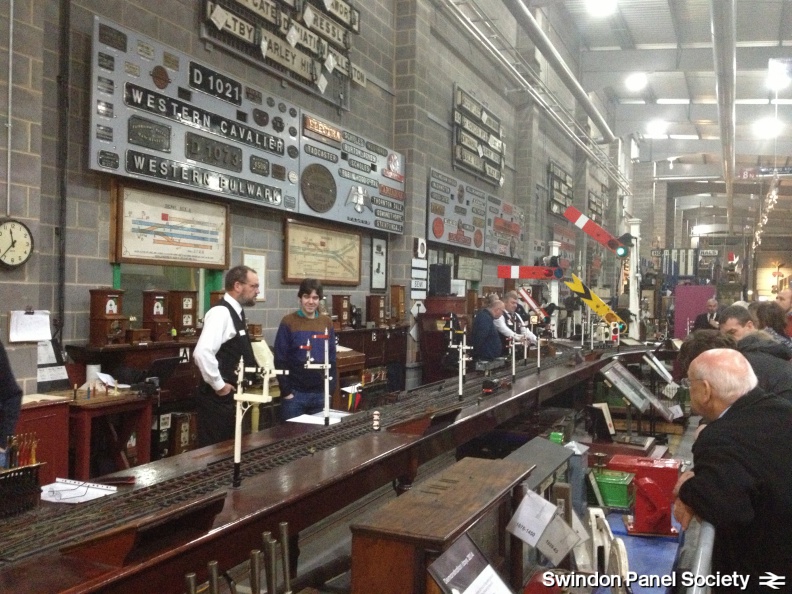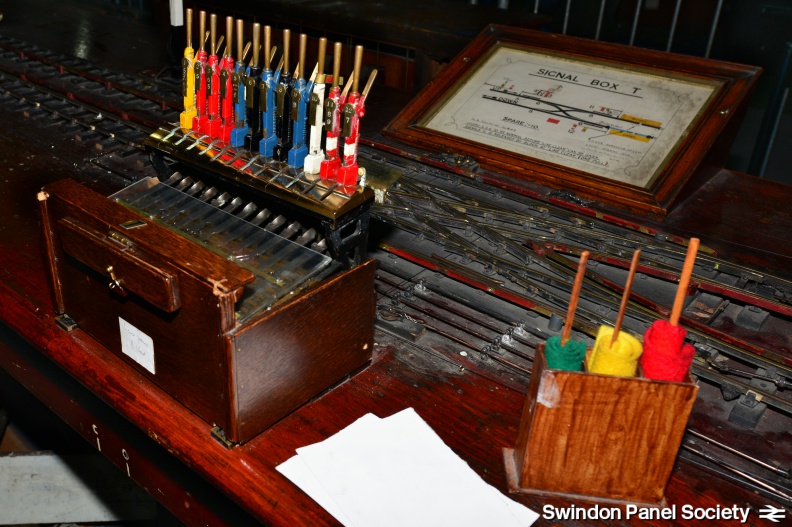The Operations Groups meet on Monday and Tuesday nights (there are two of them) to formulate the plans for the re-creation of the panel from a signalling point of view (as opposed to a physical structure point of view). The Monday group concentrates on the west end and the Tuesday group on the east end.
This week, on Monday, the area from Thingley Crossovers to Corsham was covered, with some interesting notes:
– Lots of discussion and inconsistency in the sources regarding the route lettering from SN72 and SN672. Eventually settled on A route to the Down Main, B route to 286 GPL and C route to the Up Main B202. (It was the B and C routes that were in doubt).
– As we are nominally modelling the mid-1980s, the Melksham line fringe will be to Bradford Junction, with token machines at Chippenham and SN74. Discussed and agreed that (unless we find evidence to the contrary), no indication would have been given to the Swindon signalman that a release had been obtained on SN74 when a token was withdrawn at Chippenham, based on similar installations at Maidenhead (Slough) and Kennington (Oxford). If a train left Chippenham and arrived at SN74 and the signal did not clear, there was a token machine there through with the token could be recycled.
– SN25 / SN125 shown in some sources as on single posts, but early sources show and overall gantry and an overall gantry exists now. Suspect being shown as single posts in between is an error as unlikely to have been changed then changed back. SN25R and SN125R are separate posts, so it may have been confusion with this. Although, suspiciously, the panel fascia shows it being on the right hand side, which it doesn’t for any of the other reversible or gantry-mounted signals (although 125 / 125R is a much later addition to the rest and is “SIMBIDS”, not full Reversible).

– SN25R / SN125R. These definitely are on separate posts, no doubt about that. On one source SN25R is shown as a three-aspect head with the red OOU. unable to find any reason for this other than it was provided ‘just in case’, WR having just gone through a capacity enhancement scheme between Wootton Bassett and Chippenham and Hullavington breaking sections and adding in aspects, maybe they thought they’d one day do the same between Thingley and Bathampton.
– DM97 is a three-aspect head with no yellow. This may be for the same ‘possible future use’ reason as above. There may have been a thought to make the next signal, DM101R into a stop signal. DM97 is also mounted on a cantilever structure, as if a signal for down direction moves on the Up Main was planned. (Possibly a plan to provide non-block emergency signals for Box Tunnel the same as was provided for Chipping Sodbury Tunnel?)

And on Tuesday, the area from west of Uffington to Stratton was covered, with these notes:
– The modelled layout will be that before the 2000/2002 South Marston alterations (this is necessary in order to fit Uffington Loops back into the panel).
– Several signals which are currently 4-aspects were 3-aspects before South Marston was installed: DM69, DM70, SN20, SN620.

– DM72 did not exist (having been converted to SN20 at the time of Bourton Crossovers commissioning)
– DM73 was in a different position (incidentally, this signal was re-numbered SN.998 between 2000 and 2002 to protect the installed-but-not-commissioned crossovers).
– SN4, SN604 did not exist.
– SN681 did not exist, but SN683R existed in its place.

– 624 had an outer repeater, 624RR, on the same structure as DM74.
– SN81 was UM75.






